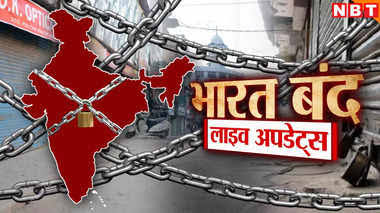Table of Contents
Bharat Bandh: Understanding the National Strike
Introduction
“Bharat Bandh” refers to a nationwide strike or shutdown in India, typically called by various groups or organizations to protest against government policies, economic issues, or other significant concerns. Such strikes can significantly impact daily life, including transportation, business operations, and public services. This article explores the concept of Bharat Bandh, its causes, historical context, and the implications of such events.

What is Bharat Bandh?
Definition and Purpose
A Bandh is a form of protest where businesses, educational institutions, and public services across India are voluntarily closed to express dissent against specific policies or issues. The term “bandh” means “closure” in Hindi, and when used in the context of a Bandh, it indicates a nationwide halt in normal activities. These strikes are typically organized by political parties, trade unions, or social organizations to draw attention to grievances and press for changes.
How It Works
During a Bandh, participants generally refrain from attending work, school, or other daily activities. Public transportation systems like buses, trains, and metro services may be disrupted, and businesses may shut down. The effectiveness of a Bandh often depends on the level of participation and the extent to which it affects daily life.
Historical Context
Early Instances
The concept of a nationwide strike has been part of India’s political landscape since the early 20th century. The Indian independence movement saw various forms of civil disobedience and protests, but the modern Bharat Bandh as we understand it today began to take shape in the late 20th century. Initially, these strikes were primarily organized by trade unions and political parties to address labor issues and economic policies.
Evolution Over Time
Over the decades, Bharat Bandh has evolved from a tool for labor disputes to a broader mechanism for addressing a range of political and social issues. In recent years, it has been used to protest against economic reforms, changes in taxation, or specific governmental policies. The frequency and scale of such strikes have also increased, reflecting the growing political activism and the intensity of public dissent.
Causes of Bharat Bandh
Economic Issues
Economic grievances are among the primary causes of Bharat Bandh. This can include protests against rising fuel prices, inflation, or economic policies perceived as detrimental to certain sectors. For instance, farmers’ protests against new agricultural laws or workers’ protests against labor reforms have often led to nationwide strikes.
Political Discontent
Political discontent also drives Bharat Bandh. Political parties or groups may call for a bandh to oppose government decisions, such as changes in legislation or controversial policies. These strikes serve as a platform for political groups to mobilize public opinion and pressure the government to reconsider or amend its policies.
Social and Environmental Concerns
Social issues, including demands for social justice, equality, and environmental protection, can also lead to Bharat Bandh. Movements addressing issues such as caste discrimination, gender equality, or environmental conservation have occasionally used this form of protest to highlight their causes.
Key Examples of Bharat Bandh
The 2016 Demonetization Protest
One of the significant instances of Bharat Bandh in recent years was the nationwide strike in response to the Indian government’s demonetization policy in 2016. The policy, which involved withdrawing high-denomination currency notes from circulation, led to widespread disruptions in the economy and daily life. Various political parties and trade unions organized a Bharat Bandh to protest the policy’s impact on businesses and individuals.
The 2020 Farmers’ Protest
Another notable example is the Bharat Bandh organized by farmers in 2020. The protest was against the three farm laws passed by the Indian government, which farmers believed would adversely affect their livelihoods. The bandh saw extensive participation from various states and drew national attention to the farmers’ demands for repealing the laws and ensuring fair agricultural practices.
Impact of Bharat Bandh
Economic Disruption
A Bharat Bandh can cause significant economic disruption, affecting businesses, transportation, and public services. The closure of markets, schools, and government offices can lead to a loss of productivity and economic activity. Small businesses and daily wage workers are particularly vulnerable to the economic impact of such strikes.
Public Inconvenience
The general public often experiences considerable inconvenience during a Bandh. Disruptions in public transportation, essential services, and daily routines can affect people’s ability to commute, access healthcare, or attend educational institutions. This can lead to widespread frustration and impact daily life.
Political and Social Change
While Bandh can cause immediate disruptions, it can also be a catalyst for political and social change. The visibility of the protest and the pressure it places on policymakers can lead to reconsideration or modification of controversial policies. Historical examples show that such protests have occasionally resulted in policy adjustments or increased dialogue between the government and stakeholders.
Response and Management
Government Response
The Indian government often responds to Bharat Bandh by deploying additional police and security forces to maintain order and minimize disruptions. Authorities may also engage in negotiations with organizers to address their concerns and potentially avert or mitigate the impact of the strike. In some cases, governments have implemented measures to ensure the continuity of essential services during a bandh.
Public and Media Reaction
Public and media reactions to Bharat Bandh can vary. While some view the strikes as a legitimate form of protest and a necessary mechanism for addressing grievances
Conclusion
Bharat Bandh is a significant aspect of India’s political and social landscape, serving as a powerful tool for expressing dissent and advocating for change. While it can lead to substantial economic disruption and public inconvenience, it also reflects the dynamic nature of Indian democracy and the active engagement of citizens in public life. Understanding the causes, impacts, and responses to Bharat Bandh provides insight into the mechanisms of political protest and the ongoing dialogue between the government and the people.







